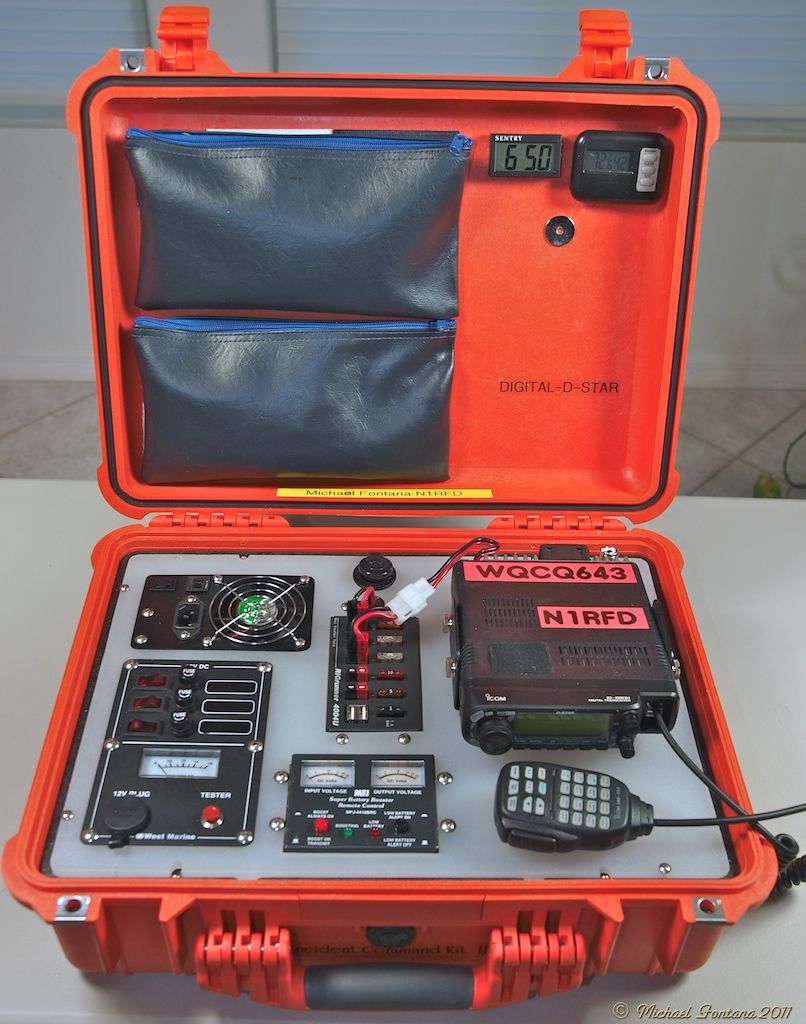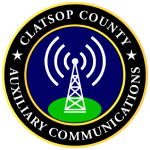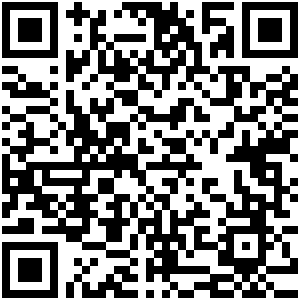 What is a go kit?
What is a go kit?
If you have been to a public event such as a festival, street fair, or something similar, you may have picked up pamphlets discussing and encouraging “disaster preparedness.” Or perhaps you belong to a volunteer emergency communications or first response group such as ARES, RACES or CERT, and you have heard go kits discussed at meetings or in training handouts.
There are two types of go kits. One is for the average resident who is conscientious about disaster preparedness and wants to take all the necessary steps to be properly prepared when a disaster might happen. The other type is the person that will be deployed to assist in disaster assistance in various functions such as radio communications (ARES, RACES, SATERN, REACT), first response (CERT, American Red Cross), or storm spotting (Skywarn, NWS).
It is this second category of volunteer responder that this article was written for. Most residents that are not involved in emergency response would probably not go to the extremes of assembling a go kit to the extent as described below. These people would, more than likely, just take advantage of evacuation shelter accommodations, move in temporarily with friends of relatives, or check in to a hotel or motel. In any of these cases, most of your immediate needs will be met.
The first responder, on the other hand, could find themselves working in primitive conditions doing a variety of tasks for an undetermined amount of time, possibly only a few hours or as much as several weeks. Through the training they have received, they will usually know ahead of time what each of these assignments require and how to prepare for them. In many cases, not only is the first responder preparing to take care of themselves, but they also need to be able to care for victims.
The volunteer agency of which you are a member may have a handout of go kit recommendations. Perhaps you will have a meeting where everyone brings in their go kits and recommendations are given on how you can improve your preparedness.
Hopefully, this article will serve to help you make sure that you haven’t skipped anything important, or it may also serve as a suggestion as to what to include if your volunteer agency has not provided you with that information.
Different levels of go kits for different needs
There are several “levels” of go kits that you can assemble. What I refer to as a “basic” kit is what everyone should have as a minimum, whether you are a first responder or just an average resident. If you are a member of an emergency communications group such as ARES, RACES, SATERN or REACT, I have added a list of basic radio equipment at the end of this section for hams or other radio users.
Most first responders or emergency communications volunteers will want to assemble one of the full service, long term or deluxe kits because you will not only be responsible for your own safety and comfort, but may be required to provide assistance to disaster victims in one form or another, so your list of required items will be more extensive. Not only that, but your deployment might last for as little as a few hours to several weeks, and you don’t want to run out of supplies before you are able to complete your service and return home.
Sometimes responders are deployed to “primitive” conditions, so many of the items in the “advanced” categories will allow you to be more comfortable under less than ideal situations. If you ever forgot your toothbrush when you went on vacation to a hotel, you were probably able to get one from room service, but during an emergency, things will not be that easy for you!
Let’s take a look at the most basic of go kits, and give you some ideas on how to prepare a kit at this level. The basic kit is designed to give you access to the tools, comfort items, safety items and convenience items that you would most likely need to use is you were evacuated or deployed. Once you have your “basic” go kit, you can begin to add to it until it grows into one of the more deluxe kits.
Basic Kit
- Case or bag to contain the items (backpack, duffle bag, large fanny pack, wheeled luggage, etc.)
- Personal photo ID
- Swiss Army-type knife with tool blades, screwdrivers, scissors, etc.
- Leatherman-type multipurpose tool
- LED flashlight w/extra batteries
- Pencil (with pencil sharpener and eraser), pens and pocket notebook
- Spare car keys/house key, keys to emergency operations centers
- Emergency money for gas, food, pay phone in a variety of denominations
- Battery/Solar operated or crank generator AM/FM portable radio
- Day-Glow fluorescent vest, preferably with stencil or large printing "Emergency Communications Operator" or similar
- Spare eye glasses & sun glasses if you require prescription lenses.
- Small personal First Aid kit containing triple antibiotic cream, Band-Aids, moist towelettes, sun screen, insect repellant, gauze patches and roll gauze, latex or nitrile gloves, Vet wrap.
- Pocket sewing kit
- Fire starting kit (cigarette lighter and/or flint set) and also wooden matches and waterproof matches
- Pocket compass (good quality)
- Sewing kit
- Whistle, loud enough to gain passerby attention
For a Radio Communications Kit, add the following:
- Dual-band (UHF/VHF) Handi-talki or mobile transceiver (with battery and power supply) in padded case
- “Tiger tail” ground plane wire (enhances HT TX & RX by usually 3db+ )
- Current FCC license, or copy thereof
- ARES/RACES/SATERN/ARC/Skywarn, etc. identification card
- Neck lanyard pouch for photo ID
- Extra Hi-capacity battery pack for HT
- DC adapter and cigarette plug for HT (12 volt use)
- AC-DC adapter for HT, in the event of available 110v. power
- Backup AA battery case for HT
- Extra fuses for HT DC adapter plug (if required – at least 2 amps)
- Speaker-mic or headset mic (earphone & microphone) or a noise cancelling headset or ear buds with adaptors to fit your equipment
- Mobile or base transceiver, 25watt minimum, with power supply or battery connecters
- D-Star transceiver (optional)
- Backup HT (if available) with extra batteries and any unique accessories.
- Operation manual or Pocket Reference card for your HF or D-Star radios
- Linear amplifier for HT, with appropriate power and connection cables
- Gain antennas for HT - telescoping or flexible dual band, 1/4 wave VHF or 5/8 wave UHF
- 12v battery, such as gel cell, with wall and solar chargers
- (2 each) 2', 3', 6', 10', 25' RG8-X jumpers with soldered PL-259 connectors with double female connectors to combine for desired distance.
- BNC or SMA connectors to S0-239 & PL-259 in multiple gender combinations to be able to interface with other radio equipment
- HT antenna adapters: SMA, SO259, BNC – whatever is unique to your HT and able to convert to any external antenna systems you might use
- RG8-x 6' jumper with BNC male on one end and female on the other to extend antenna from HT
- Cable ties (plastic or Velcro), large and small, at least a dozen of each
- ARES (or RACES, Skywarn, ARC, etc.) Field Resource Manual
- Operation manual or Pocket Reference card for your HT
- Frequency listing for Emergency Communications and phone numbers of EMCOMM principals
- Electronic tool kit
As you can see, an average resident will need some basic comfort items to be comfortable in a shelter or temporary residence until able to return home, but an emergency communications volunteer will also need the basic radio equipment that will allow them to do the tasks for which they were trained.
The container that holds these items should be small enough to be easily transported, but it should also be large enough to provide easy access to any of these items and allow for more items to be added as you expand your go kit. Many people start with a duffle bag or backpack, but one of the suitcases with wheels is also an ideal container.
Ham radio responders sometimes take care to assemble a portable communications center which may involve connecting all of the communications equipment, such as transceiver (mobile or handi-talkie), battery pack and/or power supply, meters, antenna tuner, microphone, digital interface, etc. and then securing everything to a mounting board or housing it in a custom briefcase, a tool box or even a milk carton. Amateur radio users should also be able to show their FCC license or emergency communications credentials when requested. Reference material such as repeater directories, frequency lists and manuals or reference cards for your equipment allow for adjustments to be made in the field without having to rely on your memory!
Finally, you may have an opportunity to connect your equipment to existing equipment in the field or at an emergency communications center, so make sure you have a good assortment of adaptors, such as antenna cable adaptors and AC/DC power cable adaptors. And don’t forget to take some sort or headphone or ear buds, because sometimes it is difficult to hear your radio under noisy conditions. I usually leave one ear open so that I can also hear what people around me are saying.
Now let’s take a look at what you can do to expand your kit into one that will offer much more convenience. In this article, all of the suggestions about what to include in your go kit are simply that - suggestions. Everyone has different needs, and you should give a lot of thought to these recommendations and see what you need to do differently to accommodate you individual needs. Also, your needs will differ based on the type of deployment you are likely to encounter. If you will be working in the Emergency Operations Center, your needs will be different that if you are working in the field or at an evacuation center. Your needs will be different if you will be assisting other people than if you were working on your own. And also, your needs will differ based on length of deployment. Most agencies say that you should be able to take care of yourself without any assistance for a period of three days. Major disasters with extensive damage could easily drag out well over a week or two, and if you are involved with post- disaster recovery efforts, you could even be away from home for over a month. In many of these cases, your volunteer agency will take care of things such as food or shelter, but you should make sure ahead of time that you know what will be required and what will be provided and plan accordingly.
As you add items to your go kit, you may need to change your method of packing the equipment. A fanny pack is fine for a basic kit, but you won’t be able to fit a shovel and a fire extinguisher inside of it! One of the things I like most about discussing go kits with disaster volunteers is to see all of the creative ways they came up with for housing their kit. If you belong to a club or an emergency communications agency, go kits would make a good topic for a meeting. Have everybody that has one bring their go kit to the meeting and then take turns explaining how you plan to use each of the items. You will also see a wide variety of containers! Also look for articles on the internet or in magazines you read for more go kit suggestions. As more people are becoming interested in disaster volunteer work, this is currently a popular topic.
As we continue to discuss the “long term” kit and other more advanced kits, please keep in mind that many of these items can also be part of a “basic” kit, for example, work gloves, hand lotion and a blanket. There is a lot of overlap between these categories, and once again, everything here are simply suggestions.
For a Long Term Kit, add the following:
- 3-ring binder containing ARES/REMCOM/RACES/MRC, etc. handbooks and/or directives
- Net Control Operations Manual or directives
- AC charger for HT batteries and small gel cells
- Dual band base antenna with 100' coax on reel and antenna mast kit, tripod, and mast adapter
- Dual-band or 2 Meter mag mount antenna with portable ground plane (such as metal cookie sheet)
- High intensity LED area lighting with alligator clips for power connection
- Work gloves
- Hand lotion
- Electric Soldering iron, 110 volt and 12 volt, with non-lead solder
- Propane soldering iron and propane fuel cells, 63/37 electronic solder
- Rubber band supply, large and small sizes
- Permanent marker
- Notebook computer
- Small portable combo Printer/Scanner/Fax machine, with extra ink cartridges
- Tarp, poncho or shade structure
- Toiletries: shampoo, soap bar, toothbrush & toothpaste, contact lens supplies
- Vinyl electrical tape, duct tape, rope and string
- Weather suitable outerwear, rain slicker, shade hats and umbrella
- Wool blankets or insulated poncho liner
For a Full Service “Deluxe” Kit, add as much of the following as possible (Listed by categories):
- Tools
- Automotive jumper cables
- Crowbar
- Digging shovel
- Hacksaw for metal and a wood/tree saw
- Small claw hammer, and 4 pound sledge hammer
- Hook-up “utility” wire, assorted gauges
- Klein pliers (lineman pliers) with crimper and side cutters
- Slip joint pliers, "channel lock pliers and medium Vise-Grip pliers
- Needle nose pliers, large and small
- Phillips and slot screwdrivers, large, small, and micro screwdrivers for electronics
- Socket wrench set, metric and SAE
- Safety belt & harness for tower climbing
- Vinyl electrical tape, duct tape, ropes and string
- VOM, pocket size with test leads and 4x alligator clip leads
- Wire cutters, small diagonal cutters, and cable cutters
- Wire stripping pliers for multiple gauges
Personal Items and clothing
- Cap or hat
- Dental floss
- Deodorant
- Mouthwash
- Facial and toilet tissue
- Feminine hygiene items
- Hairbrush or comb
- Hand lotion
- Hearing aids, with spare batteries
- Jacket, poncho, rain suit or sweater, depending on season
- Warm gloves
- Work gloves, leather, cotton or rubber
- Mirror
- Pill container for medicines
- Prescription medications in pharmacy labeled bottles
- Extra pants and shirts
- Extra shoes (walking or camping style)
- Socks (wool & cotton)
- Underwear
First Aid Supplies
- ACE-type elastic bandage, 2" & 4"
- Bottled Alcohol
- Alcohol pads
- Anti-diarrheal OTC medication
- Antiseptic cream or ointment, with anesthetic
- Assorted Band-Aids
- Burn cream
- Cloth tape
- Cotton balls
- Cotton swabs and tongue depressor blades
- Cough medicine or drops, throat lozenges
- CPR mask, dust and bacterial mask (N-95 or better)
- First-Aid manual
- Gauze pads, 4x4 and 2x2
- Hydrogen peroxide
- Instant cold or heat packs
- Laxative, Anti-gas or Anti-acid meds
- Nail clipper
- New Skin bandage
- NSAIDs: Advil, Nuprin, etc.
- Safety pins
- Scissors
- Thermometer
- Triangular bandages (3)
- Tweezers
- Tylenol
Shelter/Camping Supplies
- A-B-C type fire extinguisher
- Alarm Clock, wind up type
- Candles and chemical light sticks
- Carbon Monoxide detector
- Garbage bags, ties and clothes pins
- Generator and sufficient fuel storage and supplies
- Lantern, electric or fuel
- Plastic sheeting (Visquene) clear and black (opaque)
- Portable toilet
- Sleeping bags and blankets
- Small broom
- Tent, with ground cloth or tarp
Sanitation Materials
- Soap, hand bar & liquid (antibacterial is preferred)
- Towels, paper and cloth
- Diapers (if children present)
- Water purification tablets or household bleach (8-12 drops per gallon of water, let stand for 30 minutes) or boil water for 20 minutes)
- Baby wipes, with lotion if available
- Toilet paper
Food and Cooking Supplies
- Bottled water (sufficient for length of stay - Normal estimates are 1 gallon of water per person per day needed for drinking and minimal washing.)
- Canned or bottle juices
- Bread with long shelf life, Rye or white bread (high preservative levels), crackers
- Canned meat or fish
- Canned vegetables and fruit
- Canned macaroni, spaghetti, etc.
- Canned beans/chili
- Canned pudding or baby foods
- Food which can be eaten cold or microwaved
- Juice, powdered milk, water (2-gal/person/day)
- Dried fruit, trail mix, granola, nuts, snacks or candy bars
- Military MRE survival rations. (Light weight and easily stored)
- Peanut butter & Jam for sandwiches
- Snacks: hard candy, dried fruit & nuts, packaged energy bars
- String cheese in vacuum sealed individual packages
- Cooking and cutlery utensils, plastic and washable or stainless steel
- Hot plate, camping stove, small microwave
- Instant coffee, tea bags, or dried drink additives with sweetener
- Insulated cooler with several re-freezable ice packs
- Paper/plastic plates & bowls
- Paper/plastic cups or glasses
- Plastic eating utensils
- Can and bottle opener, manual
- Sterno or propane camping stove and fuel
- Cooking pots
- Aluminum foil
- Plastic wrap and zip-lock bags (large and small)
Radio Equipment
- Anderson Power Pole kit and crimping tools
- ARES/RACES/REMCOM/MRC Net frequencies directory
- Repeater directories (Local and National)
- Cell phone, GPS or APRS
- External speakers
- TNC or Sound card interface for digital communications with all necessary cables, and a notebook or netbook computer with the necessary software installed and tested.
- GMRS/FRS HT transceivers for intra-base communication
- High capacity 12v. High Amp-hour batteries
- Multi-outlet power strips and extension cords
- Patch cords, adapters and extension coax jumpers
- Rubber ducky and mag mount antennas for FM
- Whip antennas, 1/4 or 5/8 wave
- Scanner, portable and multi-frequency including weather channels
- Self-contained power backup units, rechargeable
- Spare fuses for all rigs and portable power systems
- Speaker mikes & headsets
- SWR meter for UHF/VHF/HF antenna adjustment
Miscellaneous Emergency Response Items
- DMV License & Disaster Services worker ID card
- ICS-213 Message forms
- Log sheets or logbook
- Rosters, with phone numbers of participating emergency personnel
- ARES/RACES/REMCOM/MRC, etc. uniform and or ID badges
- Binoculars or spotting scope
- Weather tools: Hygrometer, Thermometer, Anemometer
- Digital camera, with high capacity memory card, 1Gb minimum
- Laptop computer with radio service programming
By the time you have expanded your basic go kit into one of the long term or full service versions, it will no longer fit in your backpack – not even close! This is where the trunk of your car becomes a go kit container, or if you prefer not to carry all of this all of the time you use your car, you can have it neatly shelved in your garage ready to transfer to your car trunk. Each additional category above can be in its own container, for example, all of the first aid items are together in a bag, all of the camping equipment is together, all of your radio equipment in its own container, tools can be kept in a tool box, and all of your food and cooking items can be kept together.
I hope that you enjoyed this article and that it encouraged you to begin to assemble your go kit. If this is something that you have been wanting to do but have been putting it off, don’t wait any longer – locate a suitable container and begin to fill it with the items you feel would be most useful. Once you get started, you can always add more later.
There are many more items that I could have included, and perhaps a few items that could have been omitted, but my purpose was to show you something that was “average” and common. Part of the fun is that you will enjoy coming up with more items for your go kit. Please add any additional items omitted or needed. Notify Tom Smerk at with your suggestions, and I may add your suggestions to my list as I continue to share this information with others.
About tht author
My name is Tom Smerk and my call sign is AA6TS.Å I have been a ham since 1988, but it was only recently that I began to write and teach about the subjects of ham radio and emergency communications. I hold the Extra Class amateur radio license. In the late 1980’s and early 1990’s, I was a member of REACT and also was active with the American Red Cross as a member of the Disaster Action Team, editor of the “Disaster Action News,” and ARC first aid and CPR instructor. Currently, I am a member of ARES, SkyWarn, RACES and CERT. We are also forming a new statewide first- response group known as California Citizens Corps. I am also a VE for ARRL and locally for SANDRA, our local VE connection, and a member of the Mountain Empire Amateur Radio Club.
When I am not on the radio or listening to my scanners or shortwave radio, I am a professor of Business Information Technology for the San Diego Community College District and I also teach an online Virtual Assistant class for Grossmont College. My teaching background has made it easy to help people get started in ham radio and volunteer disaster service. I have a ham radio web site at http://radio.tomsmerk.com. The focus of the web site is to offer links to interesting material for experienced hams and to offer training and interesting reading for new hams. I also like to introduce interesting topics for discussion. It is probably obvious how much I enjoy all sorts of radios, and it is a pleasure for me to share my hobby with you. Please contact me at either with your comments and suggestions.






